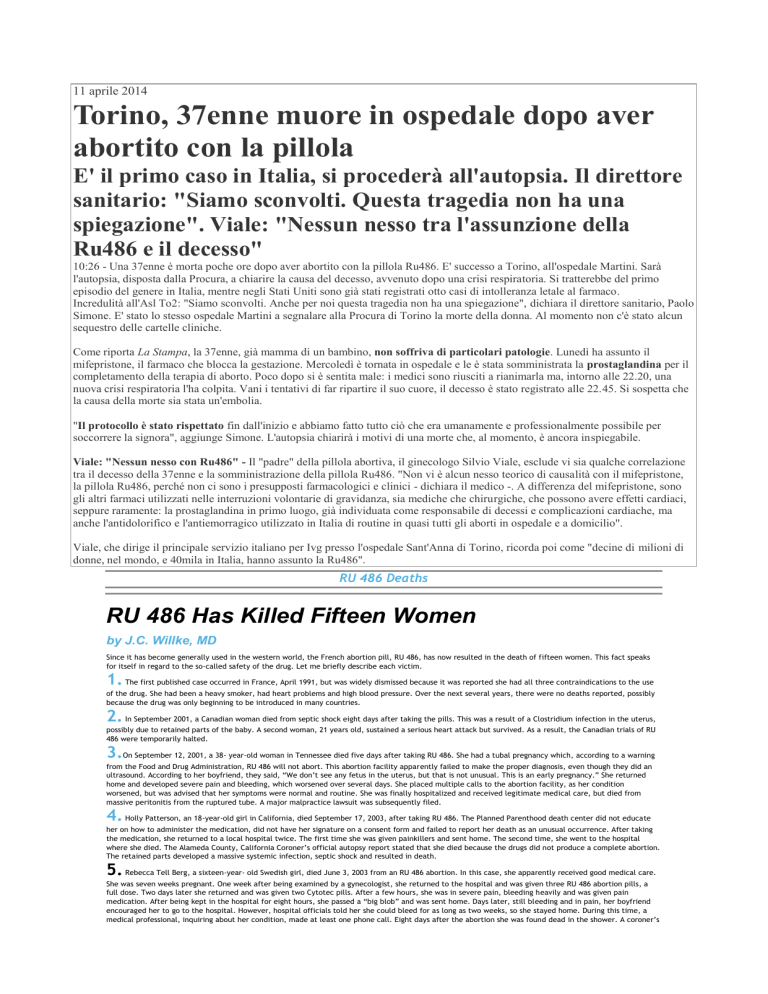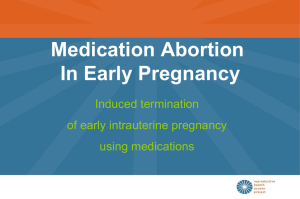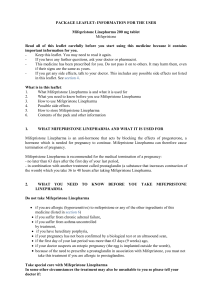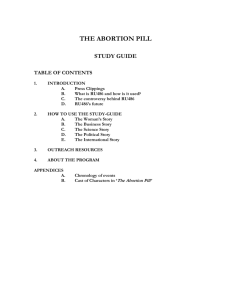Aggiornamento - FIPAV - Comitato Regionale Valle d`Aosta

11 aprile 2014
Torino, 37enne muore in ospedale dopo aver abortito con la pillola
E' il primo caso in Italia, si procederà all'autopsia. Il direttore sanitario: "Siamo sconvolti. Questa tragedia non ha una spiegazione". Viale: "Nessun nesso tra l'assunzione della
Ru486 e il decesso"
10:26 - Una 37enne è morta poche ore dopo aver abortito con la pillola Ru486. E' successo a Torino, all'ospedale Martini. Sarà l'autopsia, disposta dalla Procura, a chiarire la causa del decesso, avvenuto dopo una crisi respiratoria. Si tratterebbe del primo episodio del genere in Italia, mentre negli Stati Uniti sono già stati registrati otto casi di intolleranza letale al farmaco.
Incredulità all'Asl To2: "Siamo sconvolti. Anche per noi questa tragedia non ha una spiegazione", dichiara il direttore sanitario, Paolo
Simone. E' stato lo stesso ospedale Martini a segnalare alla Procura di Torino la morte della donna. Al momento non c'è stato alcun sequestro delle cartelle cliniche.
Come riporta La Stampa , la 37enne, già mamma di un bambino, non soffriva di particolari patologie . Lunedì ha assunto il mifepristone, il farmaco che blocca la gestazione. Mercoledì è tornata in ospedale e le è stata somministrata la prostaglandina per il completamento della terapia di aborto. Poco dopo si è sentita male: i medici sono riusciti a rianimarla ma, intorno alle 22.20, una nuova crisi respiratoria l'ha colpita. Vani i tentativi di far ripartire il suo cuore, il decesso è stato registrato alle 22.45. Si sospetta che la causa della morte sia stata un'embolia.
" Il protocollo è stato rispettato fin dall'inizio e abbiamo fatto tutto ciò che era umanamente e professionalmente possibile per soccorrere la signora", aggiunge Simone. L'autopsia chiarirà i motivi di una morte che, al momento, è ancora inspiegabile.
Viale: "Nessun nesso con Ru486" Il "padre" della pillola abortiva, il ginecologo Silvio Viale, esclude vi sia qualche correlazione tra il decesso della 37enne e la somministrazione della pillola Ru486. "Non vi è alcun nesso teorico di causalità con il mifepristone, la pillola Ru486, perché non ci sono i presupposti farmacologici e clinici - dichiara il medico -. A differenza del mifepristone, sono gli altri farmaci utilizzati nelle interruzioni volontarie di gravidanza, sia mediche che chirurgiche, che possono avere effetti cardiaci, seppure raramente: la prostaglandina in primo luogo, già individuata come responsabile di decessi e complicazioni cardiache, ma anche l'antidolorifico e l'antiemorragico utilizzato in Italia di routine in quasi tutti gli aborti in ospedale e a domicilio".
Viale, che dirige il principale servizio italiano per Ivg presso l'ospedale Sant'Anna di Torino, ricorda poi come "decine di milioni di donne, nel mondo, e 40mila in Italia, hanno assunto la Ru486".
RU 486 Deaths
RU 486 Has Killed Fifteen Women
by J.C. Willke, MD
Since it has become generally used in the western world, the French abortion pill, RU 486, has now resulted in the death of fifteen women. This fact speaks for itself in regard to the so-called safety of the drug. Let me briefly describe each victim.
1.
The first published case occurred in France, April 1991, but was widely dismissed because it was reported she had all three contraindications to the use of the drug. She had been a heavy smoker, had heart problems and high blood pressure. Over the next several years, there were no deaths reported, possibly because the drug was only beginning to be introduced in many countries.
2.
In September 2001, a Canadian woman died from septic shock eight days after taking the pills. This was a result of a Clostridium infection in the uterus, possibly due to retained parts of the baby. A second woman, 21 years old, sustained a serious heart attack but survived. As a result, the Canadian trials of RU
486 were temporarily halted.
3.
On September 12, 2001, a 38- year-old woman in Tennessee died five days after taking RU 486. She had a tubal pregnancy which, according to a warning from the Food and Drug Administration, RU 486 will not abort. This abortion facility apparently failed to make the proper diagnosis, even though they did an ultrasound. According to her boyfriend, they said, “We don’t see any fetus in the uterus, but that is not unusual. This is an early pregnancy.” She returned home and developed severe pain and bleeding, which worsened over several days. She placed multiple calls to the abortion facility, as her condition worsened, but was advised that her symptoms were normal and routine. She was finally hospitalized and received legitimate medical care, but died from massive peritonitis from the ruptured tube. A major malpractice lawsuit was subsequently filed.
4.
Holly Patterson, an 18-year-old girl in California, died September 17, 2003, after taking RU 486. The Planned Parenthood death center did not educate her on how to administer the medication, did not have her signature on a consent form and failed to report her death as an unusual occurrence. After taking the medication, she returned to a local hospital twice. The first time she was given painkillers and sent home. The second time, she went to the hospital where she died. The Alameda County, California Coroner’s official autopsy report stated that she died because the drugs did not produce a complete abortion.
The retained parts developed a massive systemic infection, septic shock and resulted in death.
5.
Rebecca Tell Berg, a sixteen-year- old Swedish girl, died June 3, 2003 from an RU 486 abortion. In this case, she apparently received good medical care.
She was seven weeks pregnant. One week after being examined by a gynecologist, she returned to the hospital and was given three RU 486 abortion pills, a full dose. Two days later she returned and was given two Cytotec pills. After a few hours, she was in severe pain, bleeding heavily and was given pain medication. After being kept in the hospital for eight hours, she passed a “big blob” and was sent home. Days later, still bleeding and in pain, her boyfriend encouraged her to go to the hospital. However, hospital officials told her she could bleed for as long as two weeks, so she stayed home. During this time, a medical professional, inquiring about her condition, made at least one phone call. Eight days after the abortion she was found dead in the shower. A coroner’s
report confirmed that Rebecca bled to death. It noted, however, that the doctors had given an appropriate dosage, followed proper procedure and “followed all the rules.”
6,7.
The British government, in January 2004, announced that two women had died after taking RU 486 for abortions. No details of the deaths or the victims have been given except that they died after taking RU 486. The deaths were described as “suspected fatal reactions associated with the use of RU
486.” When questioned, the health minister noted there might have been other causes for the deaths, but provided no evidence other than the use of RU 486.
8.
In November 2004 the US Food and Drug Administration announced that another woman had died from taking RU 486. The FDA said that they had reports of 17 potentially fatal cases of tubal pregnancy that had taken the drug. They noted that heavy bleeding was a problem in 8%, lasting as long as thirty days.
They have records of 72 cases needing blood transfusions. They also reported seven near fatal cases of severe sepsis (bacterial infections), which were treated successfully. Rather than take this dangerous drug off the market, which is what they would have done if this had been any other drug except an abortion drug, they have compromised by issuing a revised warning label detailing these potential serious problems.
On July 29, 2005, the US Food and Drug Administration confirmed that a total of five women in the US died using the drug RU 486. Note that we list three deaths above (#3,#4,#8). This adds two more, which are detailed in #9 and #10 below.
9.
Oriane Shevin, 34 from Sherman Oaks, California died June 14, 2005. An attorney and mother of two, the cause of death was sepsis, a blood infection.
10.
Hoa Thuy Tran, 21, a student teacher in Orange County, CA died in 2003. Her name was made public in October 2005 when her family filed a lawsuit against Danco and Planned Parenthood, the maker of RU 486. Her death was due to septic shock associated with the drug.
11.
March 2006 - US Food and Drug Administration, one woman died in a Planned Parenthood center in Colorado.
12.
May 2006 - Center for Disease Control reported at a scientific meeting in Atlanta of a death from an abortion in which only the second drug, Cytotec,
(misoprostol) was used vaginally along with laminaria being inserted.
13.
June 2008 – Manon Jones, an eighteen- year-old student from Caernarfon, Gwynedd was six weeks pregnant when she took the RU 486 pills.
Afterwards she felt light-headed and began to bleed abnormally. She was admitted to the hospital the next week, continued to bleed, was placed on life support and died. Post-mortem examination showed a very low blood count but also retained fetal parts in her womb.
14,15.
September 2010 – A Center for Disease Control report in the New England Journal of Medicine details the death of a 29 year old Hispanic woman in 2008. The woman died from septic shock caused by a Clostridium Sordellii infection after taking RU 486. A 21 year old Caucasian woman also died of the same complications due to taking the drug in 2009.
Concerned Women for America, a pro-life women’s group under the Freedom of Information Act, receive public documents from the FDA. These list over 600 adverse effects by women taking this drug. These included 220 cases of hemorrhage that were either life threatening or extremely serious, 71 of which required blood transfusions. In addition, 392 reports indicated women requiring surgery to repair damage resulting from the abortion including many under emergency conditions. As a result of this, many havepetitioned the FDA to remove this dangerous drug from the market before more women die.
Short of death, the most serious concern is bleeding. Women who take RU 486 usually bleed for one or two weeks, with 10% bleeding more than one month.
This leaves women exposed to infection for an extended period of time. The average woman loses four times the average blood from a standard surgical abortion. In European trials, at least one in every hundred women had to be hospitalized due to blood loss and needed a transfusion. One case illustrating this occurred during the official trials of RU 486 in the United States. A woman in Iowa almost died from hemorrhage from an incomplete RU 486 abortion. Multiple emergency blood transfusions saved her life. (This according to Dr. M. Loviere, Waterloo Courier , 9-24-95.)
Much more detail could be given to the problems resulting from the use of this chemical abortion, including fetal deformity in babies delivered after failed use of these drugs. As a close observer of this issue from its beginning, I felt it was time to document these deaths and tell the world this is not a safe drug.
December 2010
CONTACT US
Life Issues Institute, Inc
1821 W. Galbraith Rd.
Cincinnati, OH 45239
Phone: 513.729.3600
Email: info@lifeissues.org
April 10, 2006
EDITORIAL
Deaths After RU-486
Reports that up to six American women and another woman in Canada have died after pill-induced abortions in recent years are making the regimen based on RU-
486 look a lot less attractive than once thought. Conservatives in Congress and anti-abortion organizations are demanding that RU-486 be withdrawn from the market. That seems premature given the uncertainties and small number of deaths in a still-unfolding story. But women seeking an abortion will need to weigh the risks and benefits carefully before deciding which method to choose.
Based on admittedly shaky data, pill-induced or medical abortions look riskier and less certain to fully terminate a pregnancy than surgical abortions. Medical abortions performed in the first seven to eight weeks of gestation cause perhaps one death in every 100,000 procedures, while surgical abortions in that same period may cause only one death per million operations.
The deaths after medical abortions, though very rare, have some alarming and puzzling characteristics. Most of the women were healthy at the start, had apparently successful abortions, died within a week of the procedure and were infected with a dangerous bacterium. Most, for reasons yet to be explained, lived in California.
The women first took oral doses of RU-486, also known as Mifeprex, followed two days later by a second drug, misoprostol, to help expel the fetus. But, in a departure from the regimen approved by the Food and Drug Administration, they were allowed to insert the second drug into their vaginas at home — at a higher dose than first recommended — instead of taking it orally in a doctor's office.
Those changes and others were justified by scientific analyses that the new regimen would be safe and effective and could be used later in a pregnancy. The new regimen was also cheaper and easier, eliminating a clinic visit. But the slowly accumulating deaths suggest that the changes may have been imprudent. As a precautionary measure, the Planned Parenthood Federation of America, the country's largest provider of abortion services, has now abandoned vaginal insertion in favor of oral ingestion, albeit still at home and unsupervised by a doctor.
Health authorities will need to sort out which drug, if either, might be at fault, whether vaginal insertion is to blame and whether changes in a family of bacteria have made them more lethal. Meanwhile, women who live in areas where surgical abortions are hard to obtain or who simply prefer pills to surgery should be alert to any symptoms of illness after a medical abortion. The danger is slight but for a few women could be catastrophic.
RCM 2007-525 NDA 20-687 Mifepristone U.S. Postmarketing Adverse Events Summary through
04/30/2011
The following information is from United States post-marketing reports (i.e., not from a clinical trial) received by FDA of adverse events that occurred among patients who had taken mifepristone for medical termination of pregnancy. Because FDA has eliminated
duplicate reports, and in some cases, reclassified the adverse event terms for individual cases after reviewing the narrative details, the numbers provided here may differ from the numbers of the reports that may be obtained through Freedom of Information Act requests. These events cannot with certainty be causally attributed to mifepristone because of information gaps about patient health status, clinical management of the patient, concurrent drug use and other possible medical or surgical treatments. The estimated number of women who have used mifepristone in the US through the end of
April 2011 is approximately 1.52 million women. Post-Marketing Adverse Events in
U.S. Women Who Used Mifepristone for Termination of Pregnancy
Cut off date of cumulative reports since approval date in
US (September 2000)
Cases with any adverse event
04/30/11
2207
14 Died
1
Hospitalized, excluding deaths
*Ectopic pregnancies
2
612
58
*Experienced blood loss requiring transfusions
3
*Infections
4
(Severe infections
5
)
339
256 (48)
* The majority of these women are included in the hospitalized category.
1
Deaths were associated with sepsis in eight of the 14 reported fatalities (7 cases tested positive for Clostridium sordellii, 1 case tested positive for Clostridium perfringens). All but one fatal sepsis case reported vaginal misoprostol use; buccal misoprostol use was reported in one case. The six remaining
U.S. deaths involved unique events; there was one case each of substance abuse/drug overdose, methadone overdose, suspected homicide, and a delayed onset of toxic shock-like syndrome (uterine cultures were positive for Peptostreptococcus and fibroid cultures were positive for Prevotella ), and there were two cases of ruptured ectopic pregnancy. There were five additional deaths in women from foreign countries (non-US) who used mifepristone for termination of pregnancy. These included one death associated with septic shock
( Clostridium sordellii identified in tissue samples) in a foreign clinical trial and four deaths identified from post-marketing data that were associated with a ruptured gastric ulcer, uterine hemorrhage, “multivisceral failure” and thrombotic thrombocytopenic purpura leading to intracranial hemorrhage, respectively.
2
Administration of mifepristone and misoprostol is contraindicated in patients with confirmed or suspected
3 ectopic pregnancy (a pregnancy outside the uterus). As stated in the approved Mifeprex (mifepristone) labeling, bleeding or spotting can be expected for an average of 9-16 days, and may last for up to 30 days.
4
This category includes endometritis (involving the lining of the womb), pelvic inflammatory disease
(involving the nearby reproductive organs such as the fallopian tubes or ovaries), and pelvic infections with sepsis (a serious systemic infection that has spread beyond the reproductive organs). Not included are women with reported sexually transmitted infections such as Chlamydia infections and gonorrhea, cystitis and women with toxic shock syndrome not associated with a pelvic infection.
5
This subset of infections includes cases that were determined to be severe based on medical review of the case details. Severe infections generally involve death or hospitalization for at least 2-3 days, intravenous antibiotics for at least
24 hours, total antibiotic usage for at least 3 days, and any other physical or clinical findings, laboratory data or surgery that suggest a severe infection.









